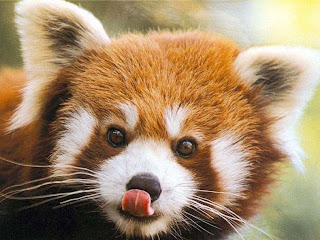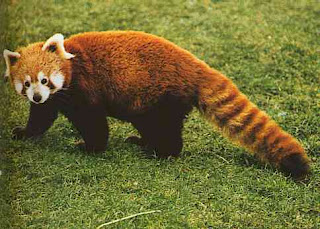True Wild Life | Red Panda | The red panda is thought to be a subspecies of the giant panda but the red panda only grows to around 1/3 of the size of the giant panda. The rat panda is has a very distinctive appearance mainly due to the markings of the red panda and the long bushy tail. Red pandas are found in mountainous regions of central Asia. The red panda tends to stay above altitudes of 1,800 ft and the red panda wont really go much higher than about 4,500 ft. Red pandas spend their lives in the trees and the cooler mountainous temperatures are perfect for the red panda as they do not agree with hotter climates.
Like their relatives the giant panda, the red panda cannot digest cellulose, a complex compound found in most plants. The red panda has to maintain diet of around 90% bamboo in order to keep itself alive and feasts on nuts, berries and smaller animals such as birds when out hunting for something tastier. Today the red panda is critically endangered with less than 3,000 red pandas left in the wild. This severe decline in the red panda population is mainly due to the destruction of the red pandas habitat but the fur of the red panda is also considered to be a good luck charm in the regions were the red panda lives in the wild.
Red pandas are more docile during the hotter daytime time and tend to pass the same snoozing in the trees. When the air gets a little cooler in the late afternoon and early evening, it is then the red panda looks for food and jumps around in the tree tops. Red pandas can be very agile animals and have been spotted being almost acrobatic when playing in the trees.
Red pandas are solitary animals so they have to actively seek out another red panda to mate with. Mating usually occurs between December and February and after a gestation period of around 5 months, the female red panda will give birth to between one and four red panda babies. The baby red pandas are born blind and begin to open their eyes after a couple of week, although the eyes of the baby red pandas will not be fully opening for at least a month. Red panda babies will remain in the nest with their mother until they are around 8 months old.
Due to the remote habitat in which red pandas live, their only real predators are the snow leopard and the human. It has been known however for baby red pandas to get preyed upon by larger birds of prey.




